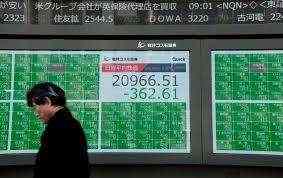

Always use different indicators comibined with harmonic your no single trade will go wrong .. The Third pattern which “may” be a Gartley could have been a winner depending on where your stops were placed. The second pattern is not even a Gartley pattern, not even close. Just because it has an “M” shape doesn’t make it a Gartley Pattern. All I did is share my own experience with this methodology and providing solutions to overcome some of these drawbacks.

Point D represents where traders will watch for a decline in price, which explains why it is a bearish pattern. Harmonic patterns can be applied to all financial markets, including stocks, commodities, and the forex market. Each of the patterns discussed below has a trading strategy attached to it, including entry points, stop-losses, and profit targets. Chart Pattern recognition is the basic and primary ability any trader develops in Technical Analysis. It may be basic development, but the perfection of pattern recognition takes extensive practice and repetitive exposure.
A trending market in general results to higher chances of harmonic pattern failure. And the range-bound markets tend to create price movements that look like a skewed “M” or “W” shapes in which harmonic patterns would stand a higher chances of profit. In harmonic pattern setups, a trade is identified when the first 3 legs are completed (in 5-point patterns). For example, in Gartley Bullish pattern, the XA, AB and BC legs are completed and it starts to form the CD leg, you would identify a potential trade may be in the works.
The entry criteria and pattern validity are determined by various other factors like current volatility, underlying trend, volume structure within the pattern and market internals etc. Stop is placed above/below the last significant pivot (in 5 and 4-Point patterns it is below D for the bullish pattern, above D for bearish patterns). Harmonic patterns construct geometric pattern structures (retracement and projection swings/legs) using Fibonacci sequences.
How to draw harmonic patterns
Our pattern recognition scannercan be used to isolate some possible trade set-ups. For example, some of the harmonic patterns look like double tops or bottoms, or even triple tops and bottoms if you flip the patterns, so this scanner can help to identify these. By using our patterns search tool, some harmonic patterns may be highlighted. You can then go through the pattern and make sure that it meets the pattern requirements, such as levels and structure, before trading it. for harmonic trading is the Fibonacci retracement tool.

It is important to note that patterns may exist within other patterns, and it is also possible that non-harmonic patterns may exist within the context of harmonic patterns. These can be used to aid in the effectiveness of the harmonic pattern and enhance entryand exitperformance. Several price waves may also exist within a single harmonic wave . Prices are constantly gyrating; therefore, it is important to focus on the bigger picture of the time frame being traded.
FREE Basic Membership: Access Harmonic Pattern Education+Software including Scott Carney’s Harmonic Trading Books NOW!
I find it even more profitable trading of point C rather then D. If I see a harmonic potential I use a trading system my group developed for trend trading works amazing and the best part is that you dont get faked out. Out of 100 harmonics 100 of them will have a CD leg, out of 100 harmonics 40 to 25 will break. Doesn’t it make more sense to trade off C rather then D.
Discover the range of markets and learn how they work — with IG Academy’s online course. It is similar to the BAT pattern in that the XA leg leads to a BC retracement, except that the retracement of point B must be precisely 0.618 of XA. The stop-loss point is often positioned at point X, while the take-profit is often set at point C. Investopedia requires writers to use primary sources to support their work. These include white papers, government data, original reporting, and interviews with industry experts. We also reference original research from other reputable publishers where appropriate.

If you draw correctly than you would have get decent profit which your chart shows as well. I know it may not make sense to you ‘cause I’m really bad at explaining. But I’ll be doing my own research, finding the optimal use of patterns, optimal tp and sl, and maybe revamping the points and conditions. If you have back tested harmonic patterns, you could share with us your result, not only asking for. Always wanted to learn harmonic pattern, tried really hard to absorb it, but always get bad trades after 1 or 2 good trades. So with a simple pattern like consolidation before a breakout, there is logic and order behind it.
Wanting the market to see your pattern
Alternatively, it could be placed above X, but this can increase the stop-loss size dramatically. The risks of loss from investing in CFDs can be substantial and the value of your investments may fluctuate. 75% of retail client accounts lose money when trading CFDs, with this investment provider. CFDs are complex instruments and come with a high risk of losing money rapidly due to leverage.
Why Do Patterns Form?
The fractal nature of the markets allows the theory to be applied from the smallest to largest time frames. Since harmonic trading performs poorly in trending markets, a logical solution would be to avoid trading harmonic patterns in a trending market. Forex traders love harmonic patterns, as they are particularly well suited to the real-time dynamics of the foreign exchange markets. When they are correctly used, they can warn a trader when underlying conditions are likely to result in a price drop, based on historical data.
Most technical traders use chart analysis with market context concepts to trade. One of the elegant ways to define market context is through a Fibonacci Grid structure. Fibonacci Grid consists of Fibonacci bands , pivot levels (to show historic Support/Resistance areas) and Market Structures . Harmonic patterns are a precise way to trade and they can be helpful for traders who enjoy studying price charts and trading patterns. It is important to remember that harmonic patterns are not always successful.
Trades are anticipated in this zone and entered on price reversal action. I will say though, that patterns do not do fantastic when the market is trending. They are meant for when the markets are in some sort of consolidation. And I will also say you are correct with your statement that harmonic patterns miss out on the trend since we have solid targets.
The price may not reverse at potential reversal zones or, if it does reverse, the price may not move as far as expected before turning back the other way. In the above example, traders could choose to enter once the price starts moving up from D. Profit targets are based on retracement levels of AD, typically at 0.50, 0.618, and 1.
A classic error is to assume that a pattern will form and attempt to trade it before it fully materialises. Harmonics require patience, yet they provide great insight into potential future price movements when correctly used. In this article, we explore how to identify harmonic patterns on trading charts and how to trade them using advanced drawing tools from our Next Generation online trading platform. Harmonic patterns are specific formations used in technical analysis that can help traders understand price action and forecast where prices may go next.